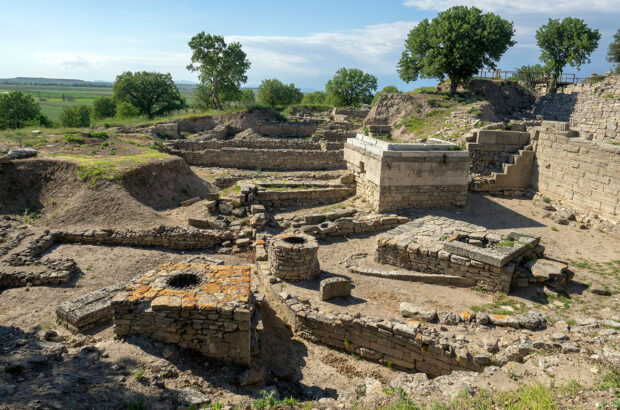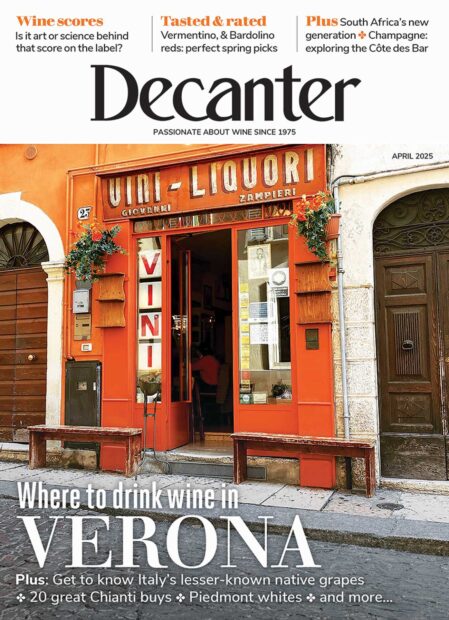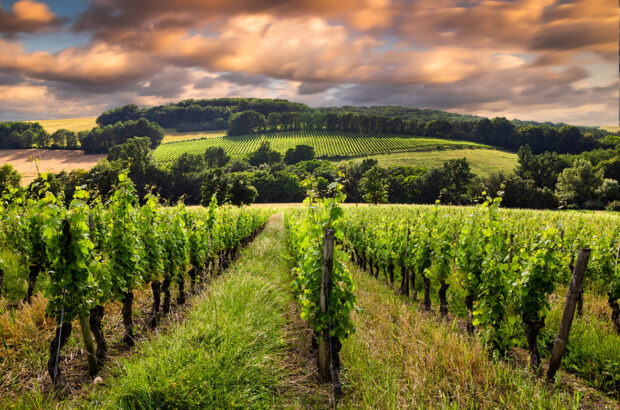Why it makes the Decanter hall of fame...
Kanonkop Pinotage 1995
Bottles produced 58,000
Composition 100% Pinotage
Yield 42hl/ha
Alcohol 13%
Release price N/A
Price today £49.20
A legend because…
Pinotage is a grape variety that divides critics and consumers alike, but Kanonkop’s version, championed by long-term winemaker Beyers Truter, has always been hailed as a benchmark by those who believe Pinotage demands to be taken seriously. Kanonop is a Stellenbosch estate now run by the fourth generation; it began bottling its wines in 1973.
The Pinotage variety was created in 1925 by Dr Izak Perold by crossing Pinot Noir with Cinsault. It was soon being widely planted and became both a workhorse grape and South Africa’s unique if controversial contribution to the world of varietal wines. It likes a warm climate and ripens early. It is not a difficult variety to grow, and although it doesn’t raisin easily, it can attain high sugar levels which can give jammy flavours. Truter, both at Kanonkop and his own winery Beyerskloof, was long recognised as the master of Pinotage.
Looking back
By the 1980s Pinotage had fallen out of fashion, and existing vines were often used to produce Port-style wines. It was Beyers Truter who realised that excessive yields were the culprit, resulting in the production of many mediocre wines, marked by aromas of banana, nail varnish and acetate. Truter curbed yields and began ageing the wine in barrel from the early 1980s, a process that gives his Pinotage far more complexity and structure. Truter realised the often unpleasant acetate aromas were the consequence of fermenting at low temperatures – he would let the temperature rise to around 30°C so as to replace those aromas with those of ripe red fruits.
The vintage
Stellenbosch growers enjoyed an excellent growing season in 1995, warm and dry. These conditions resulted in a relatively small crop of bunches, often with small berries that gave great concentration to the wines, as well as formidable power and flavour. Kanonkop’s owner Johann Krige considers 1995 to be one of the three top vintages of the past 20 years.
The terroir
Kanonkop’s Pinotage was planted on southwestfacing soils of decomposed granite, and the bush vines have been here since 1953. Thus by 1995 the vines were over 40 years old. They were dry-farmed bush vines rather than grown on trellises, which helped to restrain the variety’s tendency to crop heavily (bush vines tend to be self-regulating).
The wine
The wine was given a relatively short maceration of around three days, and fermented in open-top vats at around 30°C. The array of shallow vats resembles the lagares found in the Douro Valley. The cap was punched down by hand. Once fermentation had terminated, the wine was decanted into Nevers barriques, of which half were new, and aged for 14 months.
The reaction
In 1997 the Platter Wine Guide remarked pithily: ‘Among the most accessible so far, juicy, ripe flavours, oak vanilla adding charm.’ Tasting the wine in June this year, Michael Fridjhon observed: ‘Still remarkably youthful, with fabulous fruit intensity – hints of plum and blackberry – contributing freshness to the more evolved, earthier notes of leather and spice; savoury tannins, nuanced and detailed on the finish.’
More Wine Legends:

Wine Legend: Isole e Olena, Cepparello 1982
What makes it a legend...

Wine Legend: Egon Müller-Scharzhof TBA 1976
Why it makes our hall of fame...

Wine Legend: Biondi Santi, Tenuta il Greppo 1975
Biondi Santi is a truly iconic estate: in the late 19th century it was the first in Montalcino...

Wine Legend: Château Montrose 1990
What makes Château Montrose 1990 a worthy wine legend...

Wine Legend: Bonneau du Martray, Corton-Charlemagne Grand Cru 1990
What makes Bonneau du Martray 1990 legendary...

Wine Legend: Weinert, Malbec Estrella, Luján de Cuyo, Mendoza 1977
What makes this a legendary wine...?

Wine Legend: Joseph Phelps, Insignia 1997, Napa Valley, California
Joseph Phelps, Insignia 1997 is a legend because...







